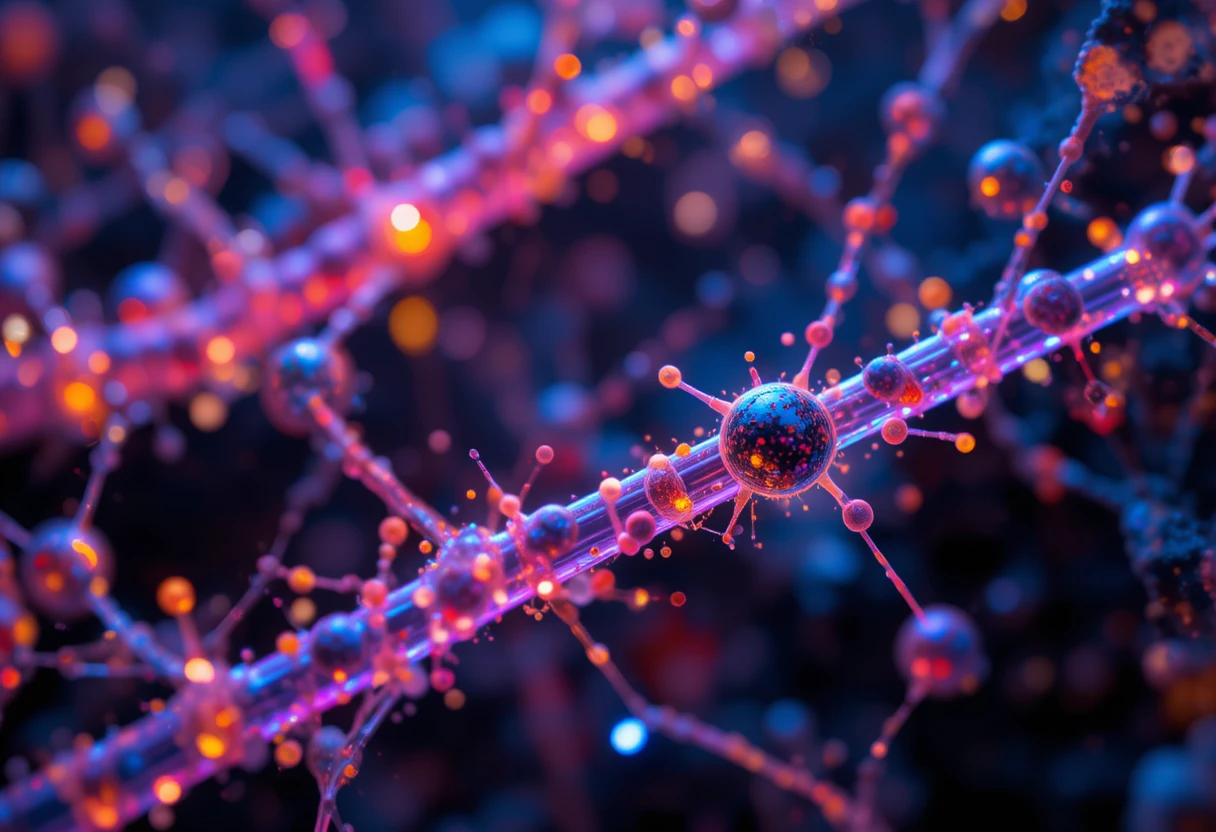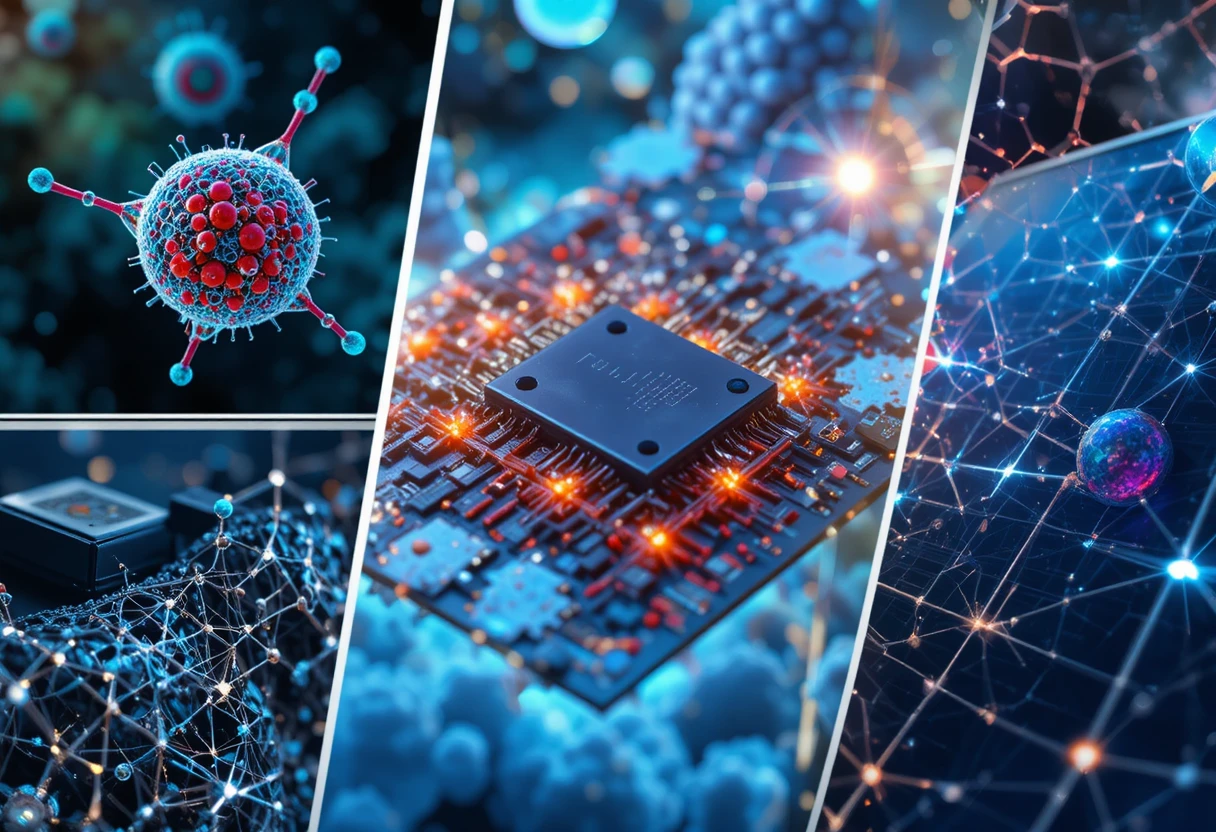Introduction to Nanotechnology
Nanotechnology is the manipulation of matter on an atomic, molecular, and supramolecular scale, typically involving structures sized between 1 to 100 nanometers (nm). At this scale, unique physical, chemical, and biological properties emerge due to quantum effects and increased surface area-to-volume ratios, distinguishing nanomaterials from their bulk counterparts. This field encompasses a wide array of disciplines, including physics, chemistry, biology, materials science, and engineering, enabling the design and creation of novel materials, devices, and systems with unprecedented functionalities.
The allure of nanotechnology lies in its potential to revolutionize industries by addressing global challenges such as healthcare, energy efficiency, environmental sustainability, and computing power. For instance, nanoparticles can target cancer cells precisely, while nanomaterials enhance solar cell efficiency or enable faster data processing in electronics. As of 2025, nanotechnology is no longer a futuristic concept but a thriving reality, integrated into everyday products like sunscreens, clothing, and electronics.
Market statistics underscore its growth trajectory. The global nanotechnology market size is estimated at USD 8.78 billion in 2025, projected to reach USD 115.41 billion by 2034, growing at a compound annual growth rate (CAGR) of 33.14%. This expansion is fueled by investments in research and development, with governments and private sectors pouring billions into initiatives like the U.S. National Nanotechnology Initiative and Europe’s Horizon Europe programs. In 2025, advancements in AI integration and 5G/6G technologies further accelerate adoption, making nanotechnology a cornerstone of the Fourth Industrial Revolution.
Despite its promise, nanotechnology raises ethical, safety, and regulatory concerns, including potential toxicity and environmental impacts. As we delve deeper, this post will explore its history, principles, technologies, applications, advantages, challenges, current status, and future trends, providing a comprehensive overview of this transformative field.

History of Nanotechnology
The origins of nanotechnology can be traced back to conceptual foundations laid in the mid-20th century. In 1959, physicist Richard Feynman delivered his seminal lecture, “There’s Plenty of Room at the Bottom,” at the California Institute of Technology, envisioning the manipulation of individual atoms and molecules to create new materials and devices. Feynman proposed that by working at the atomic scale, scientists could achieve unprecedented precision and efficiency, sparking imagination across scientific communities.
The term “nanotechnology” was coined in 1974 by Norio Taniguchi, a Japanese scientist, to describe semiconductor processes involving ultra-thin films. However, it gained prominence in the 1980s through the work of K. Eric Drexler, who popularized the concept in his 1986 book, “Engines of Creation: The Coming Era of Nanotechnology.” Drexler introduced ideas like molecular assemblers—hypothetical machines capable of building structures atom by atom—and co-founded the Foresight Institute to promote nanotechnology’s potential and implications.
Key experimental breakthroughs in the 1980s propelled the field forward. The invention of the scanning tunneling microscope (STM) in 1981 by Gerd Binnig and Heinrich Rohrer at IBM allowed scientists to visualize and manipulate individual atoms for the first time, earning them the Nobel Prize in Physics in 1986. Shortly after, the atomic force microscope (AFM) was developed, expanding capabilities for non-conductive materials. In 1985, the discovery of fullerenes (buckyballs) by Harry Kroto, Richard Smalley, and Robert Curl—awarded the 1996 Nobel Prize in Chemistry—opened doors to carbon-based nanomaterials. Sumio Iijima’s 1991 identification of carbon nanotubes further revolutionized the field, suggesting applications in electronics and materials strengthening.
The 1990s and early 2000s saw nanotechnology transition from theory to practice. Governments recognized its strategic importance, launching initiatives like the U.S. National Nanotechnology Initiative (NNI) in 2000, which has invested over $40 billion to date. Commercial products emerged, including nanoparticle-enhanced sunscreens and stain-resistant textiles. Controversies arose, particularly around Drexler’s molecular nanotechnology visions, debated publicly with chemist Richard Smalley in 2001-2003.
By the 2010s, nanotechnology matured with advancements in synthesis techniques and applications. The European Union’s Framework Programmes funded collaborative research, while Asia, led by China and South Korea, surged in patent filings. In the 2020s, integration with AI, biotechnology, and quantum computing accelerated progress. As of 2025, recent developments include electrically controlled smart windows using carbon nanotubes for energy savings and multi-layered metalenses for portable optics. The field now boasts over 100,000 research papers annually, reflecting its explosive growth.
This historical evolution from conceptual speculation to industrial application highlights nanotechnology’s interdisciplinary nature and its role in driving technological innovation.
Fundamental Principles of Nanotechnology
At the heart of nanotechnology are principles governed by quantum mechanics and surface phenomena that dominate at the nanoscale. Unlike macroscopic materials, where properties are predictable and bulk-like, nanomaterials exhibit altered electrical, optical, mechanical, and chemical behaviors due to quantum confinement and high surface-to-volume ratios. For example, gold nanoparticles appear red rather than yellow, and their catalytic activity increases dramatically.
The scale is crucial: one nanometer is one-billionth of a meter, comparable to the size of small molecules. Phenomena like the quantum size effect alter electronic properties, enabling tunable bandgaps in semiconductors. Statistical mechanical effects also play a role, influencing diffusion, reactions, and thermal properties.
Two primary approaches define nanotechnology: top-down and bottom-up. Top-down methods involve etching or milling larger materials into nanoscale structures, such as lithography in semiconductor fabrication. Bottom-up approaches build from atomic or molecular precursors, relying on self-assembly and molecular recognition, inspired by biological systems like DNA base pairing.
Molecular nanotechnology, a visionary subset, envisions programmable assemblers for atomically precise manufacturing, though debates persist on feasibility due to challenges in controlling molecular interactions. Fields like nanoelectronics, nanophotonics, and nanoionics provide the scientific backbone, enabling applications from faster transistors to efficient batteries.
Dimensionality in Nanomaterials
Nanomaterials are classified by dimensionality: 0D (quantum dots), 1D (nanotubes, nanowires), 2D (graphene, nanosheets), and 3D (nanocomposites). Lower dimensions amplify surface effects; for instance, 2D materials like graphene offer exceptional strength and conductivity, ideal for electronics and sensors. This classification guides material selection for specific applications, with ongoing research into hybrid structures.
Key Technologies and Methods in Nanotechnology
Nanotechnology employs diverse tools and techniques for synthesis, characterization, and manipulation.
Synthesis Methods
Bottom-up synthesis includes chemical vapor deposition (CVD) for growing nanotubes and sol-gel processes for nanoparticles. Self-assembly uses supramolecular chemistry to form ordered structures, while molecular beam epitaxy (MBE) layers atoms precisely for semiconductors.
Top-down methods encompass nanolithography, such as electron-beam or dip-pen lithography, for patterning surfaces at nanoscale resolutions. Functional approaches focus on utility, developing components like nanomotors or actuators without strict assembly constraints.
Characterization Tools
Scanning probe microscopes like STM and AFM enable atomic imaging and manipulation. Spectroscopy techniques, including Raman and X-ray diffraction, analyze properties, while electron microscopy provides high-resolution visuals.
Speculative technologies like nanorobotics and programmable matter remain emerging, with 2025 seeing prototypes in medical delivery systems.

Nanomaterials
Nanomaterials are the building blocks of nanotechnology, exhibiting enhanced properties. Carbon-based ones include fullerenes, carbon nanotubes (CNTs), and graphene, prized for strength, conductivity, and flexibility. Metal oxides like titanium dioxide offer photocatalytic activity for self-cleaning surfaces.
Quantum dots, semiconductor nanoparticles, emit tunable light for displays and imaging. Polymeric nanomaterials enable flexible electronics, while nanocomposites blend nano-fillers into matrices for superior composites. In 2025, innovations like nanoclay additives improve coatings, and antibacterial nanofibers enhance disinfectants.
Applications of Nanotechnology
Nanotechnology’s versatility spans multiple sectors, driving innovation and efficiency.
In Medicine
Nanomedicine transforms healthcare through targeted drug delivery, where nanoparticles encapsulate drugs to minimize side effects, as in cancer treatments. Diagnostic tools like nanosensors detect biomarkers early, and CRISPR-nanotech hybrids advance gene editing. In 2025, nanorobots for blood-brain barrier crossing treat neurological disorders.
In Electronics and Computing
Nanoelectronics shrink transistors for faster, energy-efficient chips. Quantum dots enhance displays, and CNTs enable flexible screens. Trends in 2025 include atomic-scale microscopy for quantum computing.
In Energy and Environment
Nanomaterials boost solar cell efficiency and battery capacity, with nanostructured electrodes in lithium-ion batteries lasting longer. Environmental applications include nanocatalysts for water purification and carbon capture. Smart windows with CNTs reduce energy use by 50%.
In Consumer Goods and Other Fields
Everyday examples include nanoparticle-infused clothing for stain resistance, sports gear for lightness, and adhesives with enhanced strength. In agriculture, nanosensors monitor soil; in automotive, nanocomposites lighten vehicles.

Advantages of Nanotechnology
Nanotechnology offers superior material properties, energy efficiency, and precision. It enables miniaturized devices, reduces waste through targeted processes, and fosters sustainability via eco-friendly materials. Economic benefits include cost savings in manufacturing and new markets, with the products market growing to USD 211.1 billion by 2029.
Challenges and Concerns
Toxicity risks from nanoparticles entering ecosystems or human bodies pose health hazards. Ethical issues include privacy in nanosurveillance and equity in access. Regulatory gaps hinder safe deployment, with calls for renewed infrastructure in the U.S. Technical challenges like scalability and stability persist.
Current Status in 2025
In 2025, nanotechnology is integral to emerging tech, with the market at USD 8.78 billion and services at USD 212.02 billion. Innovations include antibacterial nanofibers and CRISPR diagnostics. Global leadership shifts toward Asia, but the U.S. emphasizes infrastructure.
Future Trends in Nanotechnology
By 2030, expect atomically precise manufacturing and hybrid bio-nano systems. Trends include precision biotechnology, advanced microscopy, and sustainable nanotech. Integration with AI will enable smart nanomaterials, potentially revolutionizing medicine and energy.
Conclusion
Nanotechnology, from its Feynman-inspired beginnings to 2025’s practical innovations, promises to redefine human capabilities. Balancing benefits with risks will be key to its ethical advancement, ensuring a future where atomic-scale engineering solves grand challenges.
